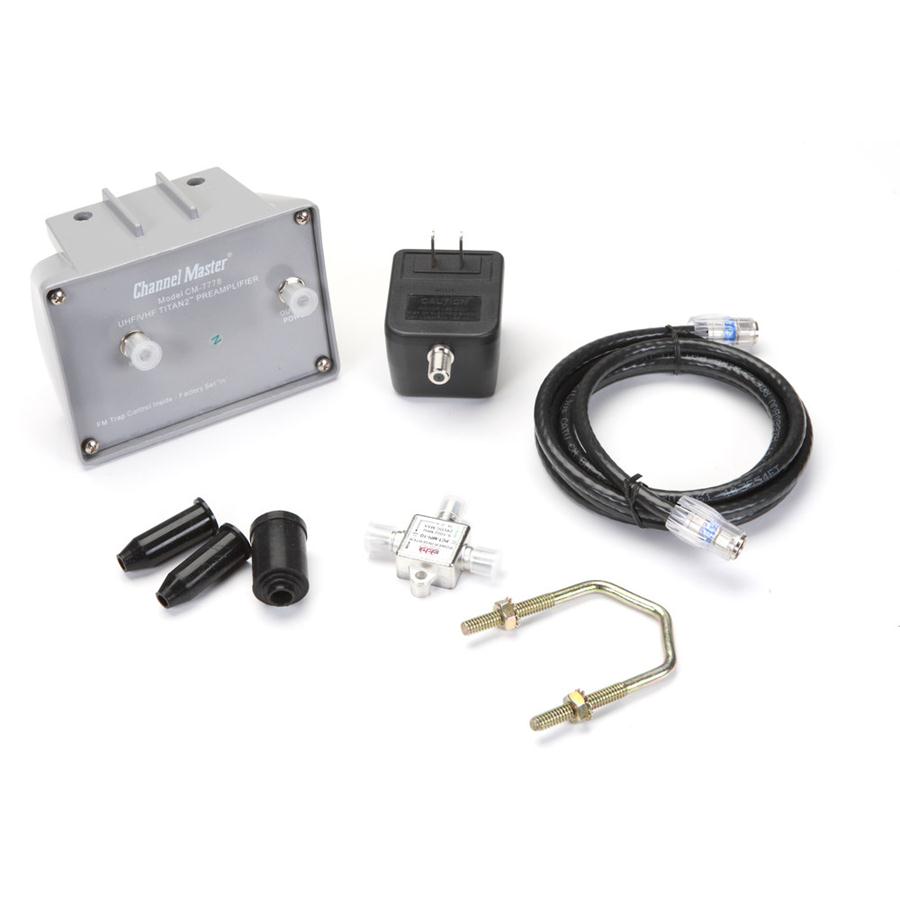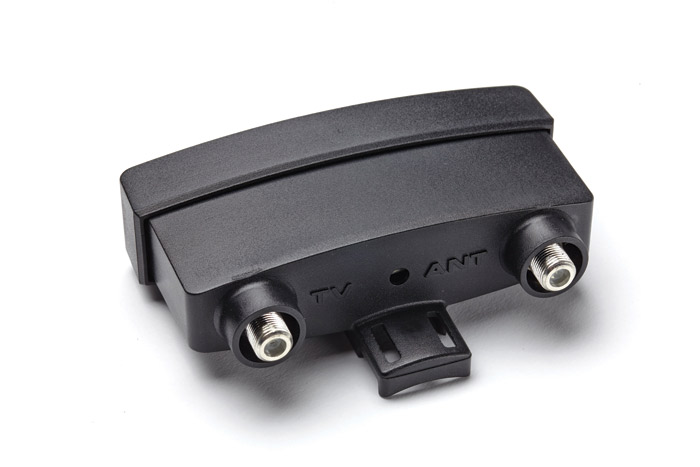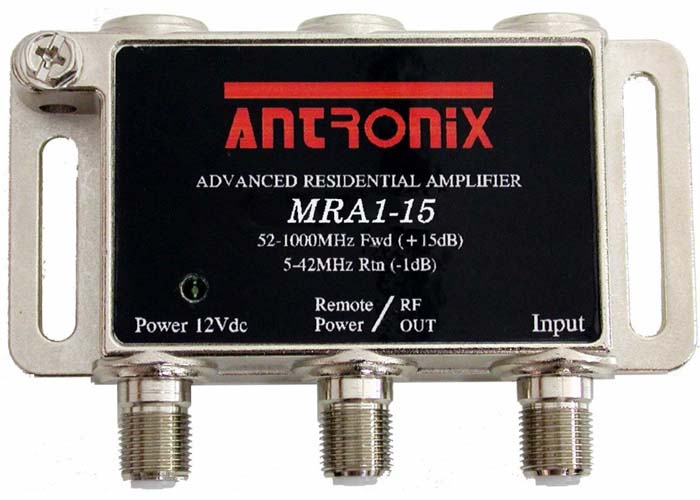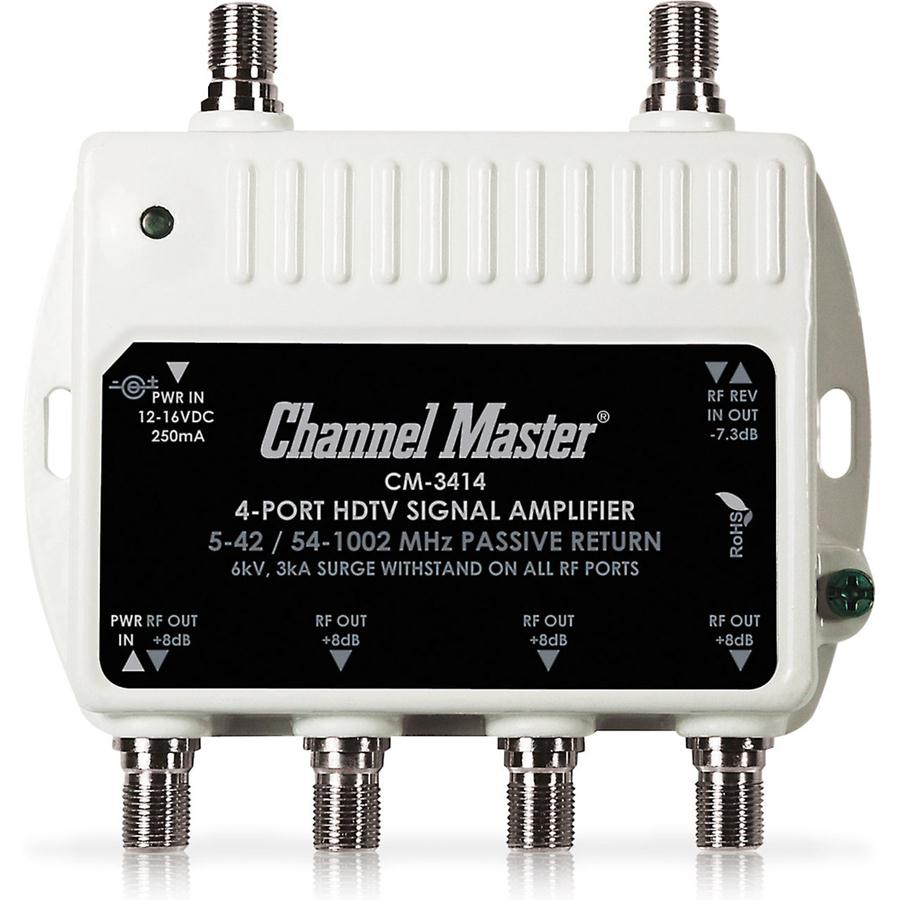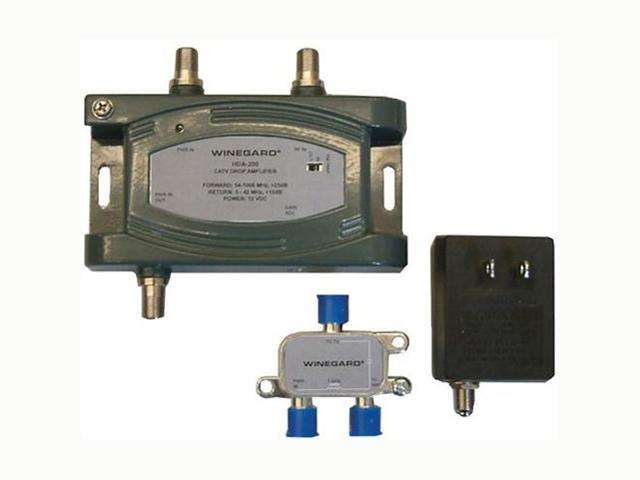|
Use an preamplifier, preferably at the antenna, if necessary to boost received signals. You can use a booster amplifier to help overcome splitter or cable loss. You can use a multi-port distribution amplifier to avoid splitter loss entirely. It is best to employ only one amplifier instead of "stacking" them in the distribution system.
| |
• Channel Master Preamps
- power supply mounts inside house
- power is sent over feed line to preamp
- medium-gain (16 dB) OR high-gain (30 dB)
|
|
• Winegard Preamp
- power supply mounts inside house
- power is sent over feed line to preamp
- medium gain (15 dB VHF, 18 dB UHF)
|
|
| |
• Antronix Booster Amp
- basically a 1-port distribution amp
- includes separate power supply
- medium gain (15 dB) |
|
• Channel Master Booster Amp
- basically a 1-port distribution amp
- includes separate power supply
- medium gain (15 dB) |
|
• Mohu Jolt Booster Amp
- includes a power supply
- can be powered by USB port on TV
- pigtail cable to TV or splitter
- medium gain (15 dB)
- available from Crutchfield
|
|
• Winegard Indoor Booster Amp
- includes a power supply
- can be powered by USB port on TV
- pigtail cable to TV or splitter
- medium-high gain (20 dB) |
|
| |
• Channel Master Distribution Amps
- available with 1, 2, 4, or 8 ports (4-port shown)
- includes separate power supply
- gain varies by model / # of ports
2-port = 11.5 dB, 4-port = 7 dB, 8-port = 4 dB
|
|
• Winegard Distribution Amps
- includes separate power supply
- power can be sent over feed line with injector
- requires splitter for multiple outlets
- medium-gain (15 dB) OR high-gain (24 dB) |
|
• Amplifier/Splitter Math
- gain and loss are in dB (decibels) which are logarithmic
- 3 dB = gain of 2x or loss of half with 1/2 of signal remaining)
- 6 dB = gain of 4x (or 3/4 loss with 1/4 of signal remaining)
- 10 dB = gain of 10x (or 9/10 loss with 1/10 of signal remaining)
- 20 dB = gain of 100x (or loss with 1/100 of signal remaining)
- loss is additive: two 2-way splitters in series divide the signal in half twice
• Terminate unused ports on splitters and distribution amps with 75-ohm terminators
• Buy any amplifier from a local dealer if possible
- return if it doesn't improve your reception
• More gain is not necessarily better
- too much signal from one close transmitter can overload the TV's tuner
- use high-gain amp only when required by distant location or multiple splitters
The best way to determine if you need an amplifier is to connect the antenna directly to a TV with a short cable (under 50 feet). If you can get a distant broadcast (i.e. New Haven or Springfield) with this connection but lose it when going through splitters and normal cabling then an amp is appropriate. If you can't get a distant broadcast with a short direct connection there probably isn't enough signal for an amplifier to boost. In this situation a larger antenna and/or better mounting location will give better results than an amp.
Tip: Sometimes it is easier to feed a second TV using a separate antenna. You could forgo a few channels and use an indoor antenna at this secondary TV. By not using a splitter the signal at the primary TV will be least twice as strong.
Links:
- Amps at Crutchfield
- Amps at Excess Supply
- Amps at Radio Shack
- Amps at Solid Signal
- Amps at 3Star
- Antronix Store
- Channel Master amplifiers
- Newegg online dealer for Channel Master, Winegard, and others
- Winegard amplifiers
|
